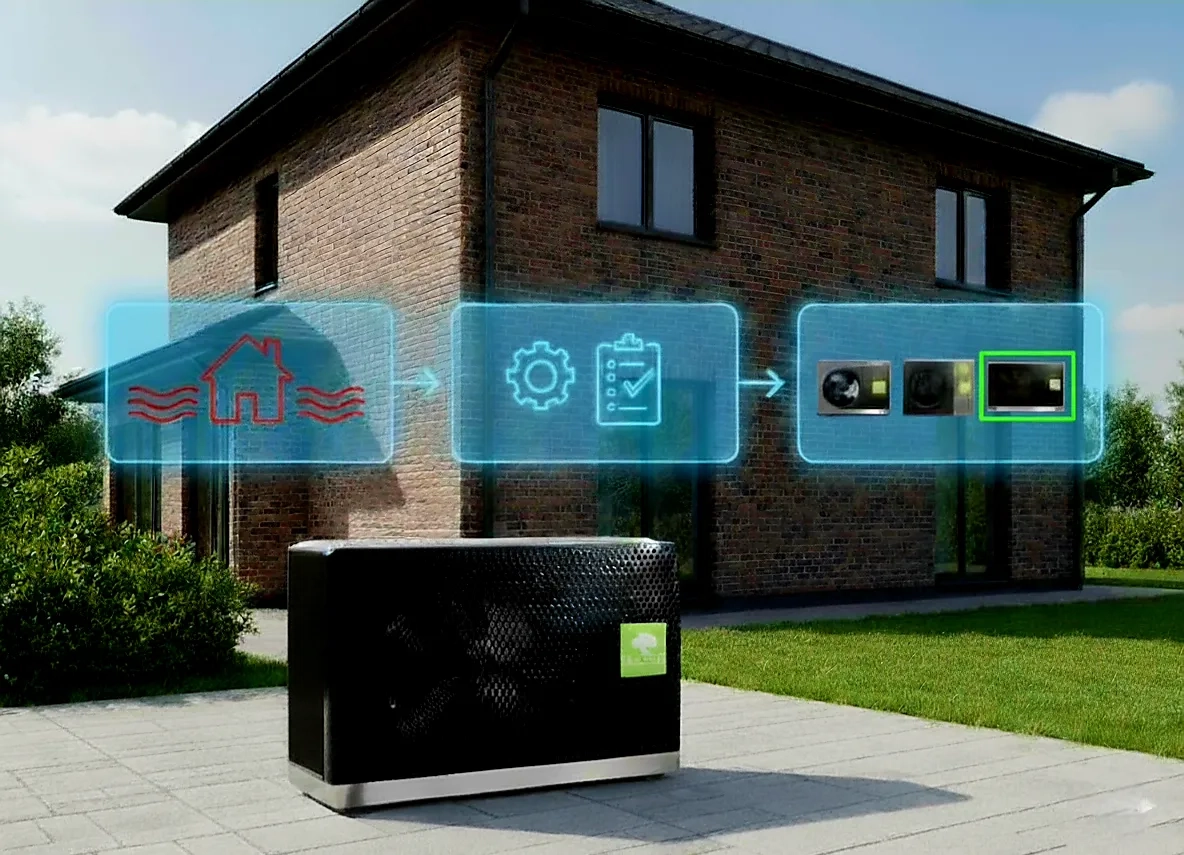
Choosing a heat pump for a home raises plenty of questions. The main one for every homeowner is: what capacity to choose? Buying an overly powerful model means overpaying. Choosing a weaker model risks comfort on cold days. How do you find the optimal solution?
Selecting the right heat pump capacity is a two-step process. First, you need to determine the building’s heat losses (this is the work of a qualified design engineer), and then select a heat pump with the appropriate capacity. This article focuses on the second stage.
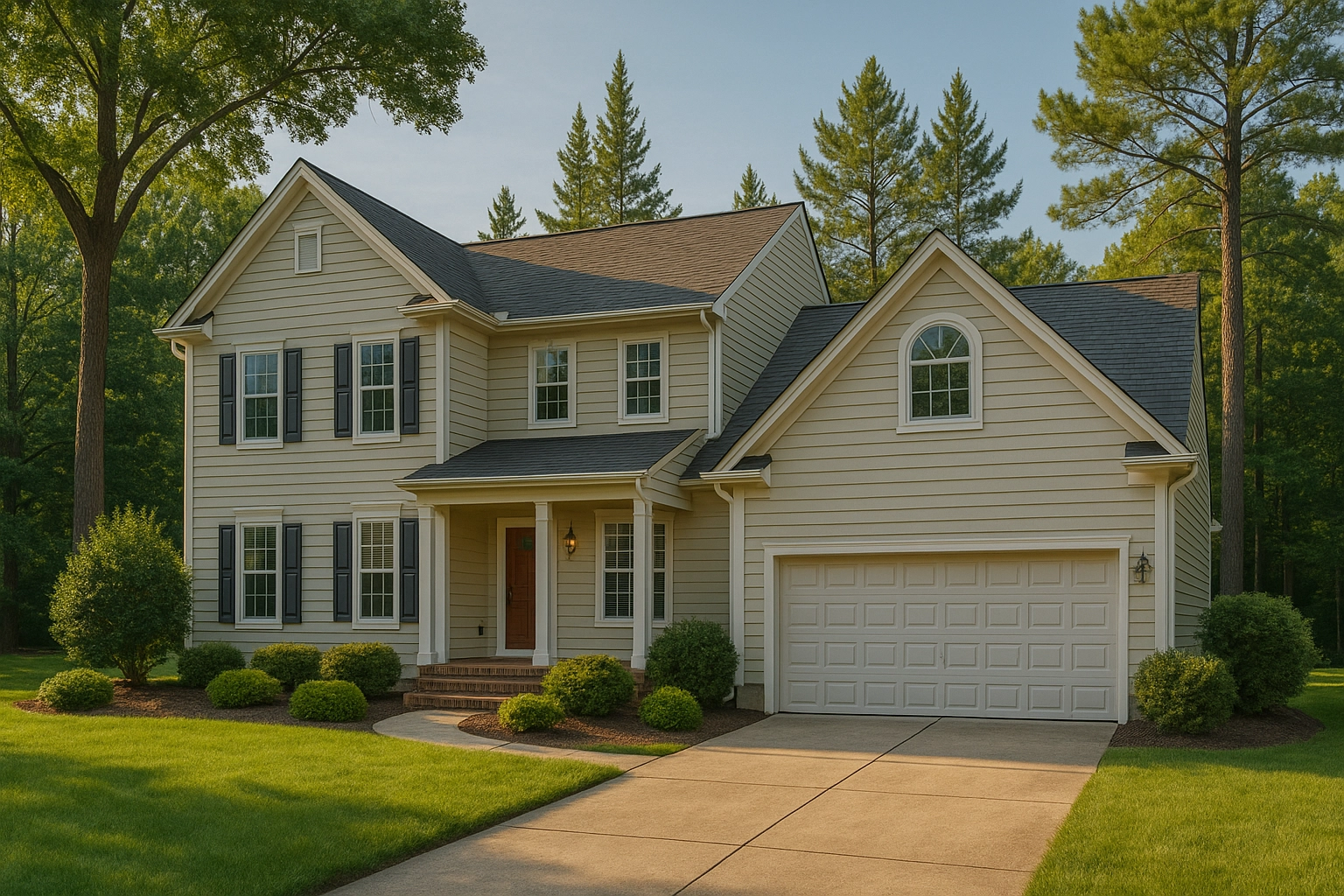
Heat losses of the house: the basis for calculating heat pump capacity
Heat losses of a house are the amount of heat (in W or kW) that is lost through the building envelope: walls, roof, windows, floor, as well as through ventilation. These are the losses your heating system, including the heat pump, must compensate.
The magnitude of heat losses depends on several key factors: the area and volume of the house, the quality of insulation, the area and type of glazing, the ventilation system, and the climate of the region. For practical understanding, here is an approximate classification of houses by heat loss level:
| Building category | Construction period | Heat losses, W/m² |
|---|---|---|
| Older stock without insulation | up to 1980 | 120-180 |
| Partially modernized | 1980-2000 | 70-100 |
| Buildings EnEV 2002 / RT 2005 | 2000-2010 | 45-65 |
| Modern nZEB buildings | after 2016 | 25-40 |
It is important to understand that this table provides only indicative values to convey the order of magnitude. Exact heat losses for your house must be calculated by a qualified design engineer according to your country’s building codes, taking into account all structural features and climatic conditions.
Choosing the operating mode of a heat pump: monovalent or bivalent?
After determining the heat losses of the house, we come to a key decision when designing a heating system with a heat pump—the choice of operating mode:
- Monovalent mode — the heat pump provides 100% of the building’s heating needs throughout the entire heating season, including the coldest days.
- Bivalent heating system — the heat pump operates together with a backup heat source (usually an electric boiler) that switches on at low outdoor temperatures.
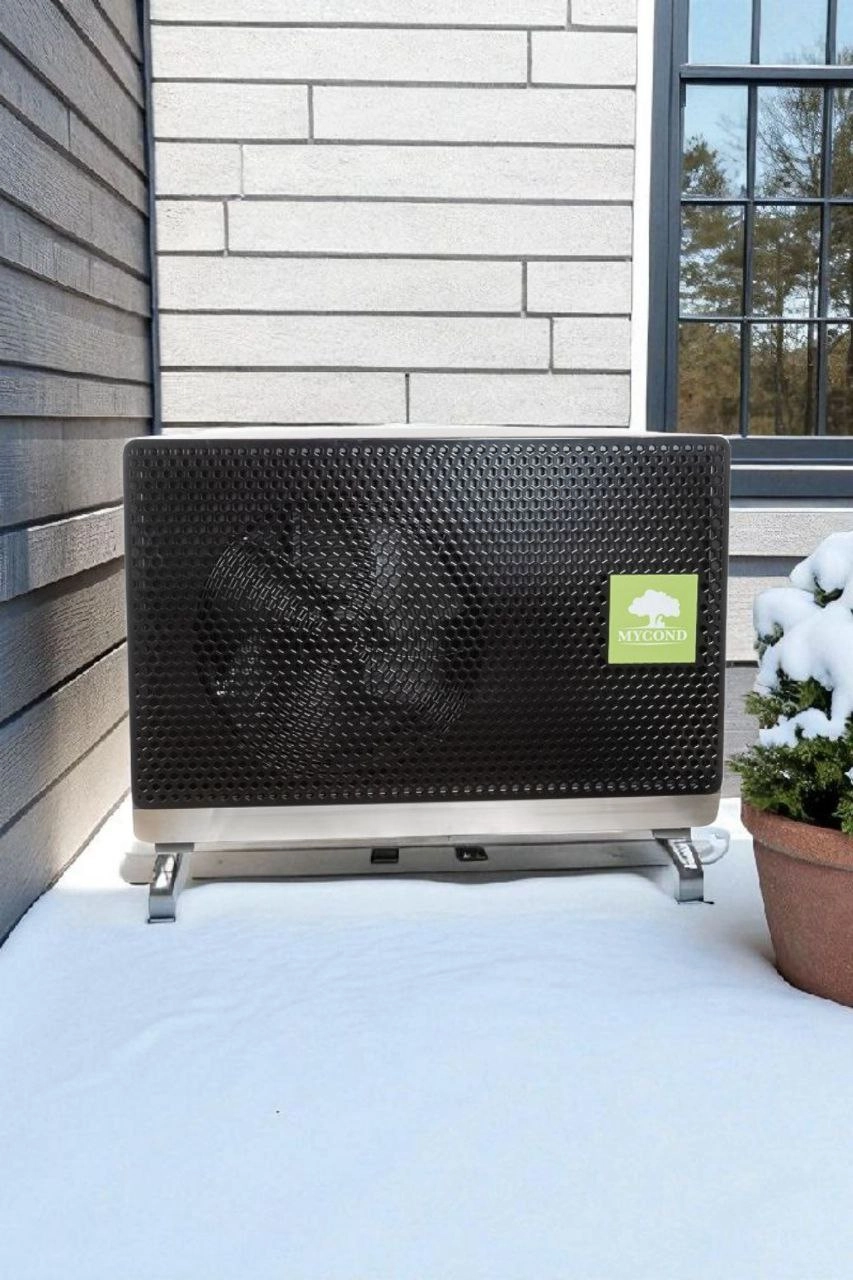
Bivalent point of a heat pump: a key design parameter
The bivalent point is the outdoor air temperature at which the heat pump alone covers 100% of the building’s heating needs. At lower temperatures, the backup heat source is engaged.
It is important to understand that the bivalent point is not a characteristic of the heat pump model but a design decision that depends on the climate of your region and economic feasibility.
Step-by-step methodology for selecting a heat pump
- Step 1: Find the design temperature of the coldest five-day period for your region from building codes or your designer.
- Step 2: Analyze the temperature distribution—how many days per year are below certain thresholds.
- Step 3: Choose the bivalent point. If extreme frosts are rare (fewer than 10–15 days per year), it is economically reasonable to set the bivalent point 5–7°C above the design temperature. If cold spells are prolonged (more than 20–30 days), it is better to choose a monovalent mode.
- Step 4: Calculate the required heat pump capacity. With a 5°C difference, heat losses are 80–85% of the maximum; with a 10°C difference—65–75%.
Example of heat pump capacity calculation
Consider a hypothetical example: a 150 m² house, heat losses — 60 W/m², total losses — 9 kW at the design temperature (call it T design).
Option A: Monovalent mode
The bivalent point equals T design. A heat pump of 9 kW + 15% margin = 10,3 kW is needed. Suitable models: BeeSmart MHCS 045 NBS (11,6 kW) or MHCS 050 NBS (15,35 kW), or BeeThermic MHCM 10 SU1A (10,6 kW) or MHCM 14 SU3A (14,8 kW). The heat pump covers 100% of the demand throughout the season, delivering maximum savings at a higher equipment cost.
Option B: Bivalent mode (point 5°C above T design)
Losses at this temperature are 80% = 7,2 kW. A heat pump 7,2 kW + 15% = 8,3 kW is needed. Suitable: BeeSmart MHCS 035 NBS (9,2 kW) or MBasic MHM-U09HL (9,7 kW). Backup source — an electric boiler 3 kW (to cover the 1,8 kW shortfall). The heat pump covers most of the season; the backup runs only a few days, saving on the heat pump’s purchase cost.
Option C: Bivalent mode (point 10°C above T design)
Losses are 67% = 6 kW. A heat pump 6 kW + 15% = 7 kW is needed. Suitable: MBasic MHM-U06HL (7,2 kW) or BeeSmart MHCS 035 NBS (9,2 kW). Backup source — 3 kW. The backup runs more often; the savings are smaller.
It is important to understand that these are hypothetical examples to illustrate the methodology. Specific parameters are determined by a design engineer based on local codes and the climate of your region.
Capacity safety margin for a heat pump
When selecting heat pump capacity, it is important to account for a safety margin:
- Standard margin: 10–20% — to compensate for the drop in COP at low temperatures and provide a reserve for the future.
- Larger margin: 20–30% — for regions with extreme frosts, large domestic hot water demand, or plans to expand the house.
- Smaller margin: 10–15% — for well-insulated homes with accurate heat loss calculations and a backup heat source available.
Checklist for selecting heat pump capacity
- Determine the total heated area
- Assess the building category using the heat loss table
- Account for ceiling height if it exceeds 2.7 m
- Find the design temperature of your region
- Analyze the temperature distribution
- Consider the area and type of glazing
- Determine domestic hot water needs
- Account for the heating system type and heat carrier temperature
- Decide between monovalent or bivalent mode
- Determine the bivalent point
- Add a 10–20% safety margin
Comparison of Mycond heat pump models
MBasic series: cost-effective solution
| Model | Capacity A7W35 (kW) | COP A7W35 | SCOP | Class | Noise (dBA) | Recommended area at 40/70/100 W/m² (m²) | Min. operating t° | Compressor |
|---|---|---|---|---|---|---|---|---|
| MHM-U06HL | 7,2 | 4,26 | 4,65 | A+++ | 50 | 180/103/72 | -25°C | Zhuhai Landa |
| MHM-U09HL | 9,7 | 4,01 | 4,53 | A+++ | 56 | 242/139/97 | -25°C | Zhuhai Landa |
| MHM-U12HL | 11,9 | 4,05 | 4,50 | A+++ | 56 | 297/170/119 | -25°C | Zhuhai Landa |
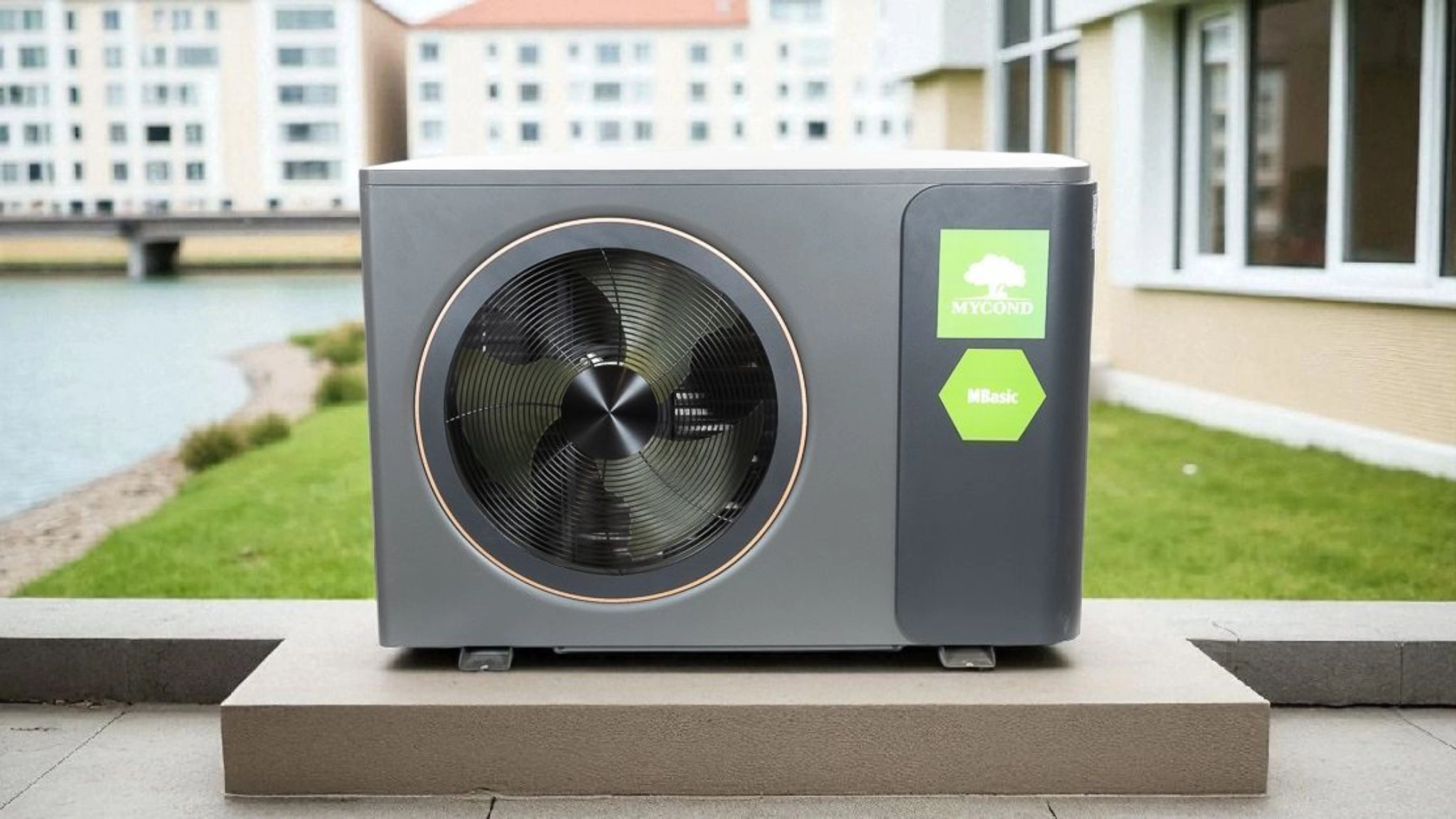
BeeSmart series: intelligent solution
| Model | Capacity A7W35 (kW) | COP A7W35 | SCOP | Class | Noise (dBA) | Recommended area at 40/70/100 W/m² (m²) | Min. operating t° | Compressor |
|---|---|---|---|---|---|---|---|---|
| MHCS 035 NBS | 9,2 | 4,38 | 4,72 | A+++ | 52 | 230/131/92 | -25°C | Mitsubishi Electric |
| MHCS 045 NBS | 11,6 | 4,30 | 4,74 | A+++ | 52 | 290/166/116 | -25°C | Mitsubishi Electric |
| MHCS 050 NBS | 15,35 | 4,78 | 4,98 | A+++ | 59 | 384/219/153 | -25°C | Mitsubishi Electric |
| MHCS 070 NBS | 18,5 | 4,47 | 4,83 | A+++ | 61 | 462/264/185 | -25°C | Mitsubishi Electric |
BeeThermic series: high-temperature solution
| Model | Capacity A7W35 (kW) | COP A7W35 | SCOP | Class | Noise (dBA) | Recommended area at 40/70/100 W/m² (m²) | Min. operating t° | Compressor |
|---|---|---|---|---|---|---|---|---|
| MHCM 06 SU1A | 6,5 | 4,9 | 4,58 | A+++ | 50 | 162/93/65 | -25°C | Panasonic EVI |
| MHCM 10 SU1A | 10,6 | 4,6 | 4,47 | A+++ | 52 | 265/151/106 | -25°C | Panasonic EVI |
| MHCM 14 SU3A | 14,8 | 4,6 | 4,53 | A+++ | 55 | 370/211/148 | -25°C | Panasonic EVI |
| MHCM 18 SU3A | 18,8 | 4,5 | 4,53 | A+++ | 56 | 470/269/188 | -25°C | Panasonic EVI |
| MHCM 24 SU3A | 24,0 | 4,3 | - | A+++ | 58 | 600/343/240 | -25°C | Panasonic EVI |
Comparative analysis of Mycond series
MBasic — a cost-effective solution for homes from 70–100 to 120–170 m² depending on insulation. Offered in three models with capacities from 7,2 to 11,9 kW. Optimal price-to-performance ratio. Uses Zhuhai Landa compressors with COP 4,01–4,26 and SCOP 4,50–4,65 (class A+++). Monoblock with built-in hydraulics, refrigerant R32, noise level 50–56 dBA, operation down to -25°C, Heat Pump Keymark certification. Ideally suited for bivalent systems.
BeeSmart — an intelligent series for homes from 90–130 to 260–460 m² depending on insulation. Available in four models with capacities from 9,2 to 18,5 kW with the highest efficiency (SCOP up to 4,98, COP up to 4,78, class A+++). Uses Mitsubishi Electric compressors. Features: 7-inch touch display, weather-compensated control, two heating circuits, SmartGrid support, Modbus, integration with smart home systems, built-in 6 kW heater. Noise level: 52–61 dBA, Heat Pump Keymark certificate. The ideal choice for monovalent systems with maximum automation.
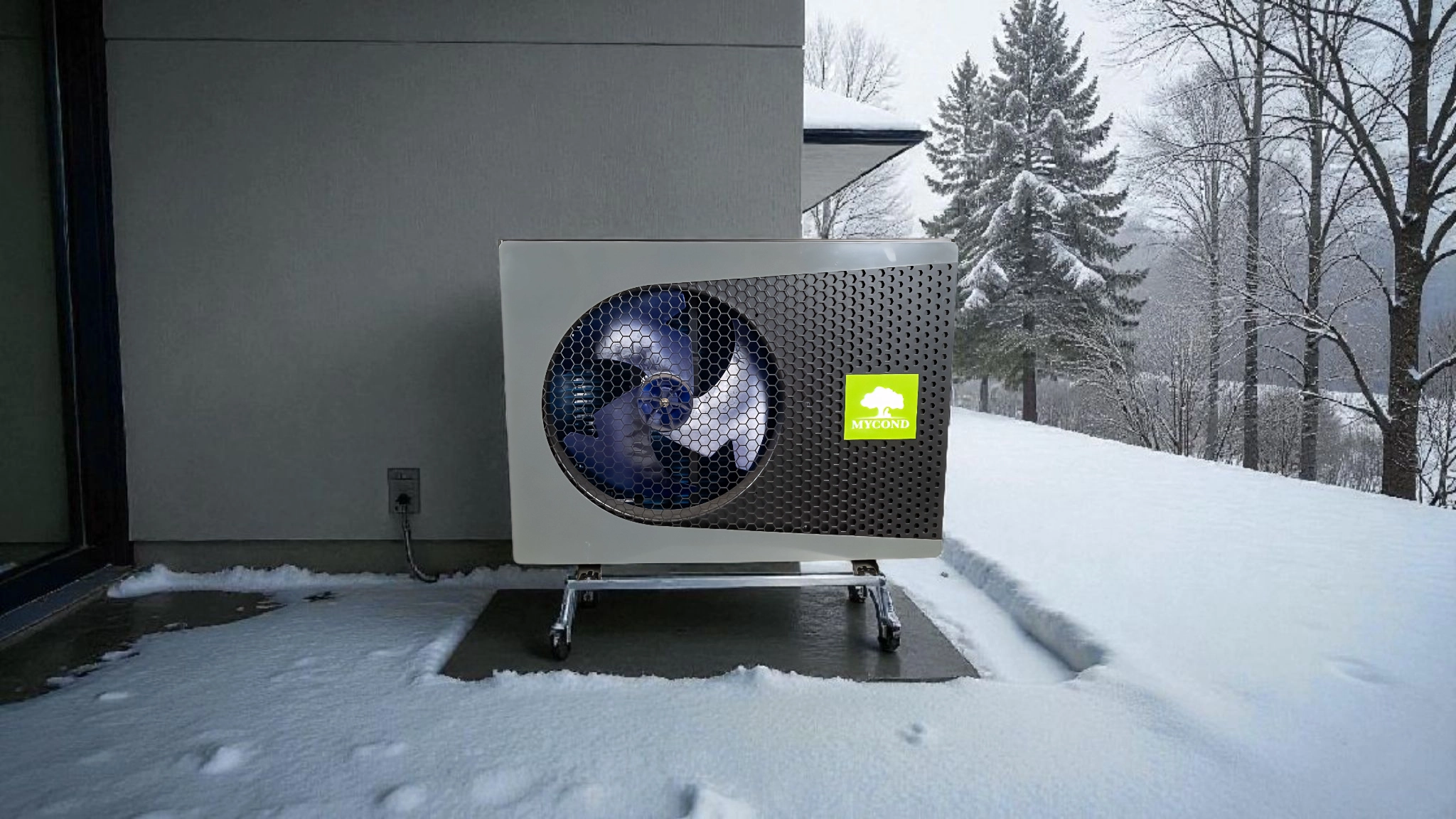
BeeThermic — a series for high-temperature heating of homes from 65–90 to 240–600 m². Five models with capacities from 6,5 to 24 kW. Uses Panasonic EVI compressors with economizer technology, enabling operation with supply temperatures up to 55–60°C. COP 4,3–4,9, SCOP 4,47–4,58 (class A+++). Noise level: 50–58 dBA, Heat Pump Keymark certificate. Ideally suited for retrofitting older heating systems, large properties, and bivalent systems.
Typical mistakes when selecting heat pump capacity
- Selecting by area without accounting for insulation — the difference in heat losses between a modern and an old house of the same area can be 3–4 times.
- Ignoring ceiling height — when the ceiling height exceeds 2.7 m, heat losses increase proportionally.
- Underestimating domestic hot water needs — a family of 3–4 people requires an additional 1–2 kW reserve.
- Choosing an overly powerful heat pump — leads to frequent on/off cycling, reduced efficiency, and a shorter service life.
- Choosing a heat pump that is too weak or setting a high bivalent point — the backup source runs too often, savings drop.
The importance of professional calculation
Professional calculation of the home’s heat losses is a mandatory stage in designing a heating system. This calculation is performed by qualified design engineers who consider seven key factors: building dimensions, insulation of structures, area and type of glazing, ventilation system, climatic conditions of the region, type of heating system, and domestic hot water needs.
The calculation is performed according to your country’s building codes using specialized software. The cost of such a calculation will be fully repaid thanks to optimal equipment selection and energy-efficient system operation.
Frequently asked questions about heat pump capacity calculation
How many kilowatts of heat pump per square meter are needed?
There is no universal figure. For modern energy-efficient houses — 40–60 W/m²; for renovated — 70–100 W/m²; for old buildings — 120–180 W/m².
Can you install a heat pump in a house without insulation?
Technically possible, but economically impractical. It is better to invest in thermal modernization first, and then choose a smaller-capacity heat pump.
When is it reasonable to use one or two heat pumps?
For houses over 250–300 m², a cascade solution with two heat pumps is often more effective. Advantages: staged start-up, higher efficiency at partial load, redundancy. Disadvantages: higher cost, more complex control.
How does regional climate affect the choice of heat pump capacity?
Climate determines the design outdoor temperature. Differences between regions can amount to 20–30% of the required heat pump capacity.
Is an additional capacity margin needed for domestic hot water?
Yes. To provide domestic hot water, a 20–30% margin over the heating capacity is recommended, or use a separate water heater, or a built-in electric heater.
What if the heat pump cannot keep up with heating during severe frosts?
This means the bivalent point is set too high, and the backup heat source is running more often than planned. Savings from the heat pump decrease.
Can the heat pump capacity be increased in the future?
This is difficult and expensive. It is better to carry out the correct calculation from the outset and choose the optimal capacity with a small margin for the future.
How to get professional help with selecting a heat pump?
If you already have a project with calculated heat losses, contact a Mycond manager to receive a proposal for selecting the optimal heat pump model.
For a professional approach, order a heat loss calculation from a qualified designer — this is a mandatory step. After that, Mycond specialists will select the equipment that best meets your needs.